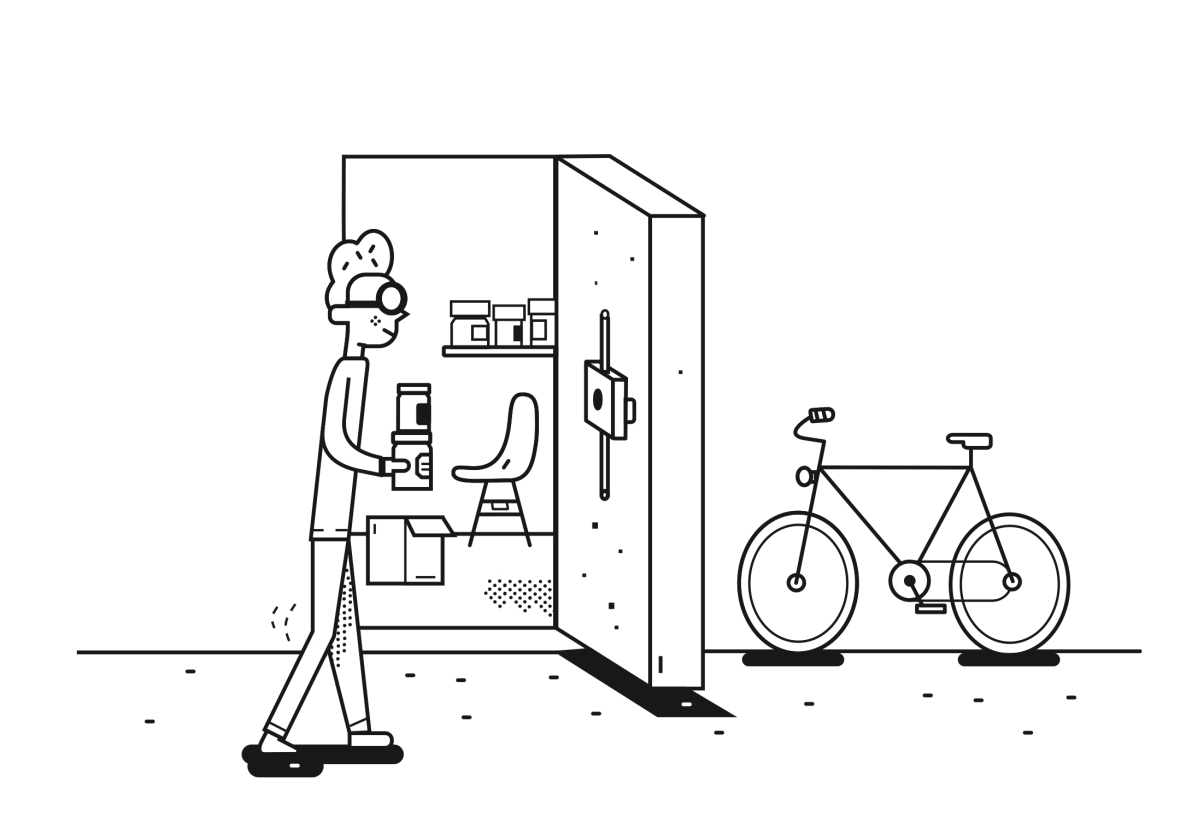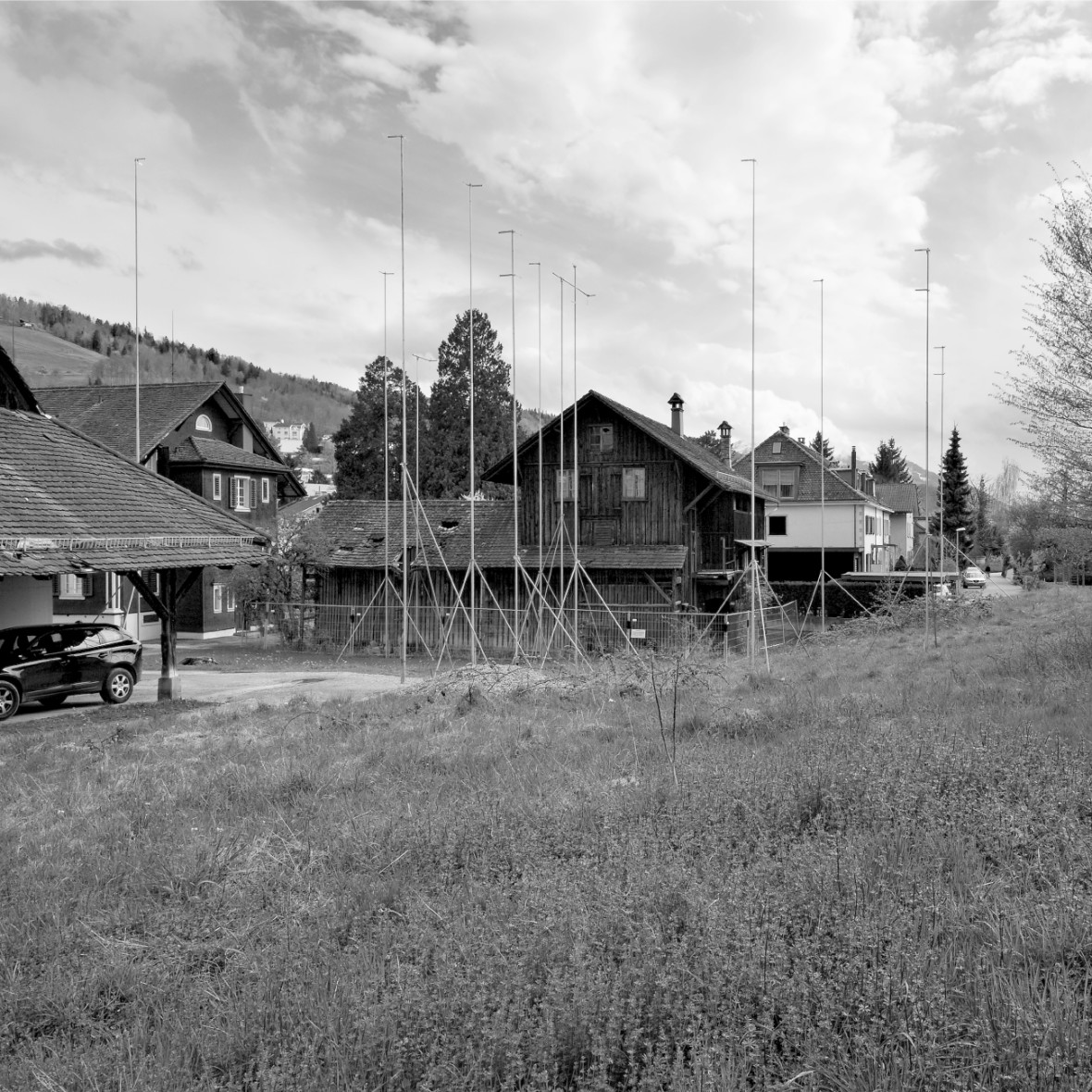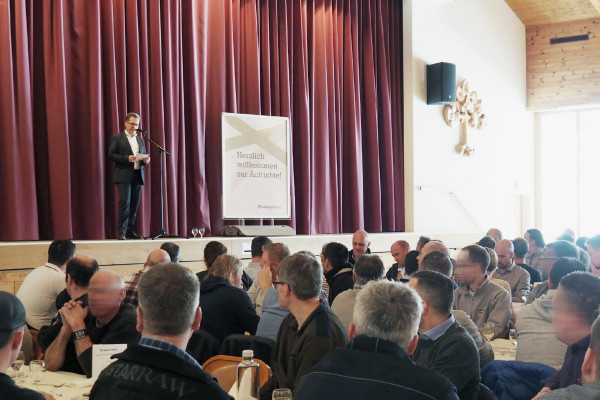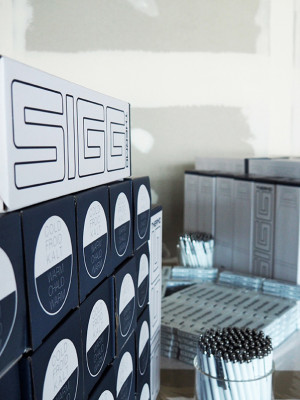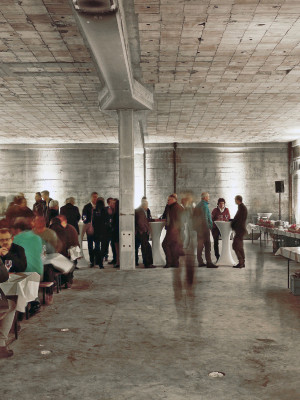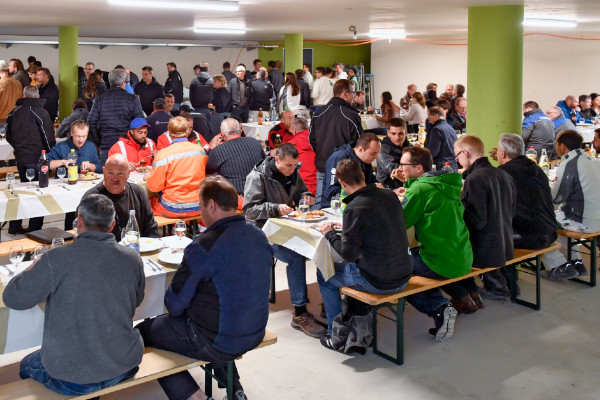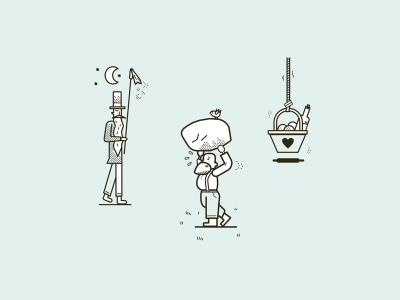
Heading to the bunker in an emergency
Did you know that only in Switzerland are markers erected as building profiles? Or that we are the country with the most shelters? Some Swiss peculiarities.
As Regine Giesecke travelled through Switzerland, she wondered: what do the rods on some plots of land mean? Giesecke, who moved from Germany to Zug in 2008, is not the only immigrant to be surprised at the sight of building profile markers. Switzerland must be the only country in which “profiling” – to use the technical term – is consistently carried out.
The photographer, Giesecke, was so impressed with the profiles that she started to take pictures of them: “I’m fascinated by the slender rods that rise up into the sky. They mark the transition: The new has yet to be erected and the old has not yet disappeared. The past and the future overlap.” Giesecke, who has since adopted Zug as her home, displayed her series of images in an exhibition.
But what the photographer finds aesthetically fascinating has a practical background. “The purpose of profiling is to create transparency for the public. It shows the dimensions of a planned construction. Perimeter, height and area,” explains Daniel Keller, boss of the leading supplier of building profile markers, Keller + Steiner AG. He knows of no other country with this requirement.
“The purpose of profiling is to create transparency for the public.”
Part of the democratic culture
Building profile markers probably have something to do with the democratic Swiss system: they are a part of the construction process, in which people in this country have a relatively large say. The profiles have to be put up when a building application is submitted and remain standing until authorisation is granted. On average, Keller estimates that a profile is in place for around three months. But the duration varies from a few weeks to several years – depending on how long the building authorisation and complaints procedure lasts. Only in the city of Basel would no profiles be erected.
The profiling regulations vary from district to district, says Keller with a grin: “Time and time again, we encounter surprises.” It’s rare that anyone has a problem with the building profiles themselves. “But sometimes neighbours get angry because the building profile obscures their nice view.” All in all, the profiles have a positive effect. It makes it easier to visualise a new build than if we only had plans or models available. This advantage is also recognised elsewhere, such as in Oxford, where the city is discussing putting up building profiles.
Exceptional density of shelters
Some foreigners find something else rather bizarre that for us is completely normal: air-raid shelters. Whether it’s used as a music room, junk room or military accommodation, almost every Swiss person is familiar with the inside of a shelter – including Silvia Berger Ziauddin. As a child, she had to fetch jam jars from there. Today she is a historian and probably the top expert on the history of Swiss air-raid shelters.
“Switzerland is one of only a few countries that forces its citizens to have a shelter,” says Berger Ziauddin. Across the country, there are 360,000 personal air-raid shelters. Essentially every inhabitant has a place available. That is a world record. The German daily newspaper “Die Welt” also mocked our “eccentricity”. “If anyone asks a Swiss person if they have a shelter, they’ll be looked at as if they’d asked if the person breathed air,” she wrote. In Germany especially, the concept of a shelter is something that some people find difficult to comprehend. Cellar rooms are more readily associated with misfortune. Many Germans met their death in such places during the bombardments in World War II. But not everyone shares this scepticism: “Time and time again we find interest in this commendable infrastructure, especially from East Asia,” explains Pascal Aebischer from the Federal Office for Civil Protection (FOCP).
But in Switzerland, our love of shelters, just like that of army bunkers, is practically part of our DNA. “Building into mountains and underground has positive connotations for us,” says historian Berger Ziauddin. “That’s to do with tunnel buildings, of which people are proud, and the réduit policy of World War II when the nucleus of the army withdrew into the mountains. People said to themselves: We came away unscathed because we had these bunkers that the army could retreat into.” In the Cold War too, the construction of shelters and bunkers was intended to signify a spirit of resistance to the outside world.
However, in 2011 the obligation to have a shelter was nearly abolished. But following the nuclear accident in Fukushima, the National Council came to its senses. However, today shelters are only required to be built in building developments with more than 38 rooms – and even then, this is only in districts with not enough of such areas. In earlier decades, a shelter was compulsory in every newly built detached house.
Silvia Berger Ziauddin finds that the réduit mentality has largely disappeared, and people regard shelters in a pragmatic way. These are often used for other purposes or they are rented out – as accommodation for asylum seekers or as clubhouses, for example. Thus district authorities receive revenue and the infrastructure is maintained.
The Swiss like tidy hedges
Alongside security, the Swiss seem to like clear boundaries. At least that’s what you would conclude from what must be a record number of hedges. A detached house with a tidy lawn surrounded by a thuja hedge: this image is very widespread. The love of hedges comes from their ability to stop people from outside looking in, and also to mark boundaries, according to expert portals. The Swiss just love their private space.
The classic square hedge consists of a single type of shrub. More interesting, though not as screening, are mixed hedges with different plants. Bamboo or climbing plants are also suitable for demarcation.
The high number of hedges is linked to the dense population, Andreas Wasserfallen believes. Almost no-one else can navigate the legalese as well as the lawyer from Berne. “There have been arguments over border plants for a long time. You can find legal literature on the issue going back around 100 years.” The laws vary from canton to canton. Hedges in Zug must not be closer than half their height to the boundary of a person’s plot of land. Thus a 4-metre high thuja hedge has to stand 2 metres behind the boundary.
Throughout Switzerland, the trimming law applies: plants that grow over from a neighbouring property into your own causing significant damage may be trimmed back to the boundary – after the neighbour has been given an appropriate amount of time to resolve the issue. In case of conflict, people should always agree without going to court, advises the expert Wasserfallen. Because what is the benefit of winning a court case if it causes an argument with your neighbour?
Neighbourhood conflicts are not unique to Switzerland. But in our densely populated country, people do get into disputes particularly quickly. In an emergency, you can always crawl into your shelter, after all.
When the new has yet to be erected and the old has not yet disappeared
The photographer Regine Giesecke has been living in Zug since 2008. She works as an architectural photographer for various clients, including Alfred Müller AG. She also develops freelance projects.
In 2013, Regine Giesecke displayed her large-scale images of building profiles in an exhibition in the Shedhalle in Zug and in the cantonal building authority in Zug. The photos were also exhibited at the Swiss Photo Awards 2013.
On the one hand the aesthetics of the building profiles fascinate her, as she writes: “The thin rods rise up like a slender network of lines into the sky and create a contrast to the architecture and natural landscape.” On the other hand, the profiles stand for the overlap of the past and the present in one place: “The new has yet to be erected and the old has not yet disappeared.” Regine Giesecke also addresses the disappearance of historic buildings and the transition to the new in other works.
“Aufrichte” – building work completed: a cherished tradition
As a company with an awareness of tradition, Alfred Müller AG maintains the custom of having a party to celebrate the completion of building work. The “Aufrichte” event, as it is called in Switzerland, goes back to the Middle Ages and was intended to compensate the workers. “With the Aufrichte, we want to say thank you to everyone involved in the building project,” says President of the Board of Directors and builder Christoph Müller. “For us it’s about appreciation and also being thankful that we were able to implement a project without any accidents.” The Baar real estate company usually celebrates with a fine three-course meal. Christoph Müller and the project manager in charge each address those present personally with a short speech. Christoph Müller expresses his gratitude and mentions anecdotes from the construction period or interesting figures about the project. At the end, the workers and planners receive a gift.
“It is a nice custom that we want to continue to maintain.”
The party traditionally takes place when the construction of the shell is completed; at Alfred Müller AG the celebration is usually held when construction is at an advanced stage. As many people these days have other plans in the evenings, the party increasingly takes place over lunchtime. The workers appreciate the Aufrichte, Christoph Müller is convinced: “It is a nice custom that we want to continue to maintain.”
Photo: Alfons Gut

